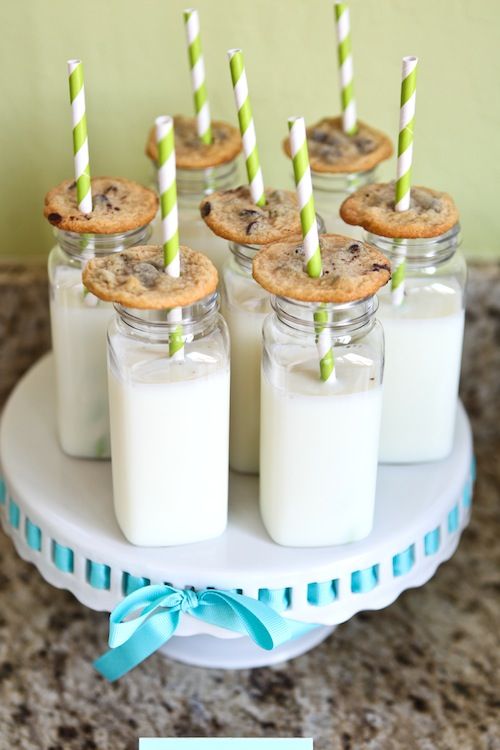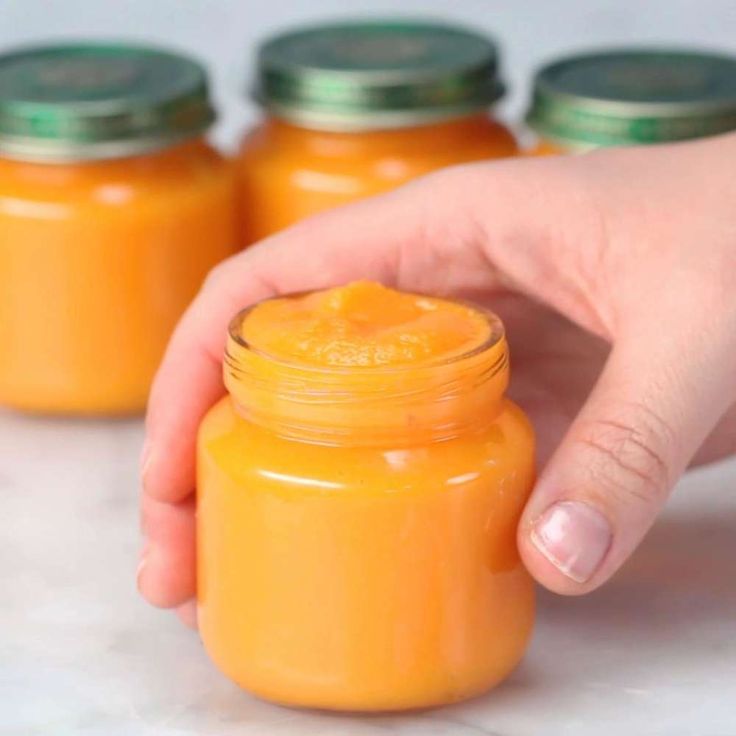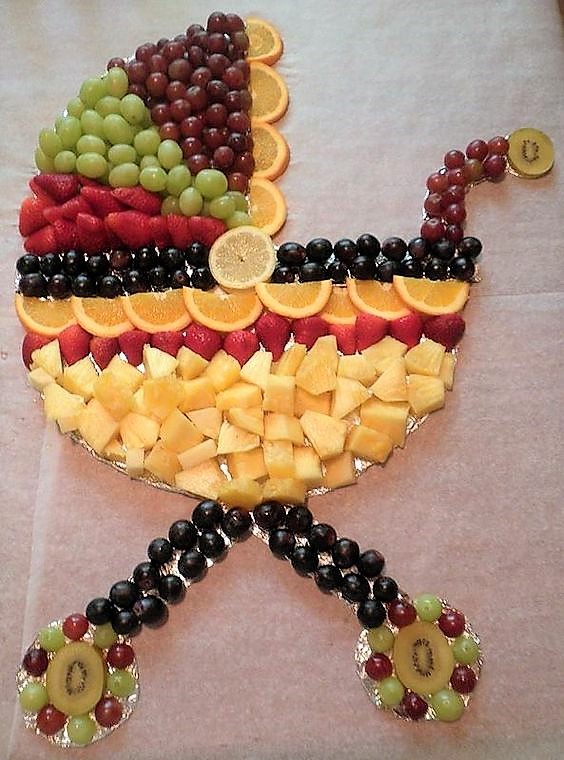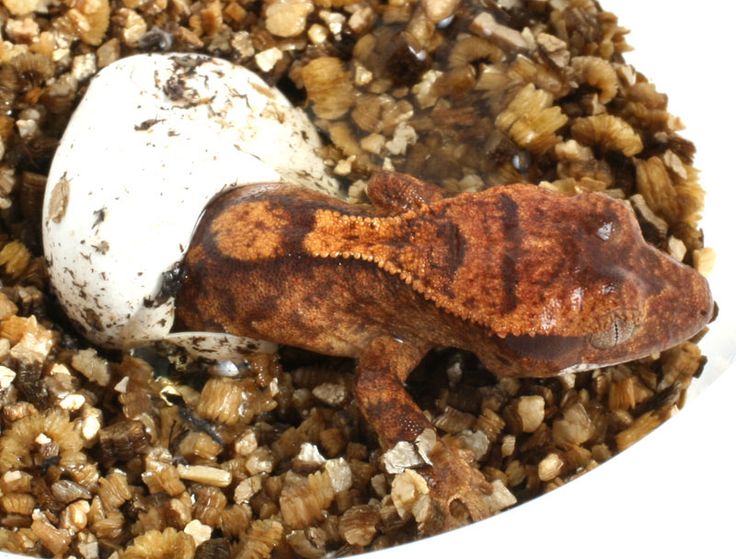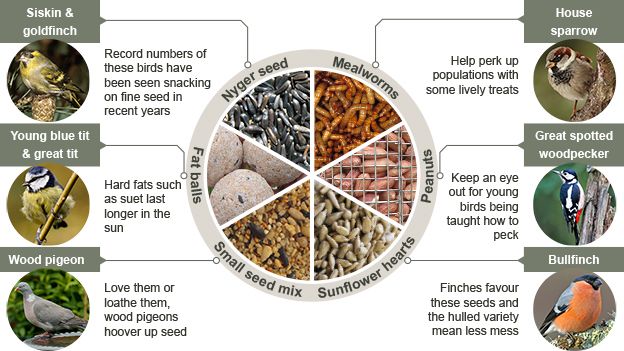How to play the baby food game
How to Play "Name that Baby Food" Baby Shower Game
Name that baby food is an awesome baby shower game that requires some set-up, but is totally worth it! In this baby shower game, your guests will taste different selections of baby food and try to guess what it is. The person with the most baby food friendly palate wins the game.
Materials
- Jarred Baby Food - 6-12 flavors
- Wastebasket
- Container - where guests can put their completed answer sheets
- Permanent marker / pens / pencils
- Paper to cover the jar labels
- Answer Sheets - these can be blank or pre-numbered so guests will just write their guesses about the flavors that correspond with the number
- Tasting utensils - plastic spoons or popsicle sticks (enough so that guests don't reuse the utensil for each flavor)
Prepping for Name that Baby Food Baby Shower Game
To prepare for this game, you will need to purchase some baby food jars in advance. To keep the game fair and simple, it's best to choose baby food jars that only contain one type of fruit or vegetable.
There are a lot of combo flavors (like apples and bananas or mangos and pears, etc...), but that may really stump your players, so just sticking to one ingredient per jar is best.
To keep things interesting, you may look for baby food that look somewhat alike - it's tricky but not too tricky. For examples, apple baby food and pear baby food may look very similar in consistency and color, so that might be a good choice for a couple of flavors. Carrots and sweet potatoes also look similar, so that could also be a nice couple of flavors that you can choose.
Once you have the baby food jars purchased, make a note of which flavors are in which jars (you'll need to know this for the answer key as the labels will be removed). A quick numbered list with the flavor and numbering the bottom of jar with a permanent marker can be a quick way to keep track.
Once you have the baby jar flavors noted, you can take off the wrapper (or you can always cover the wrapper with some patterned baby to hide the flavor). If you choose to take off the wrapper, there might be a little bit of adhesive left, so you might need some adhesive remover to get those last bits of stickiness off.
If you choose to take off the wrapper, there might be a little bit of adhesive left, so you might need some adhesive remover to get those last bits of stickiness off.
Now with your "naked" jars, you can number them with a permanent marker or get some colorful construction paper and make a new label for the jar with just the number.
For the game, your guests will get a blank numbered piece of paper and they will write their guesses that correspond to the number on the jar.
Baby Shower Game Set-up
To set-up the game, you will need some space where you can put out all the materials - jars of food, game sheets, pens, popsicle/spoons, wastebasket, etc... You should opt for a dedicated space so the stuff doesn't get mixed up with other things. A small table or countertop should be fine.
How to Play Name that Baby Food
There are a couple of ways that you can play the game. You can have the game be passive, meaning the guests can play it throughout the baby shower event and drop their answer sheets in a container and you can tally up the correct answers later and announce the winner. Or you can make the game a main event and ask for volunteers to play while the rest of the guests become the audience.
Or you can make the game a main event and ask for volunteers to play while the rest of the guests become the audience.
If you choose to play the game passively, you might consider having the instructions out on display so guests know what it's all about - the last thing you want is guests thinking you're serving appetizers!
If you are expecting guests of all ages to attend, then you might think twice about letting the game be passive - depending on the age of the kids, they may not quite understand the game and the results could be...messy.
The other way to play this game allows for everyone to enjoy the action. You'll need to carve out some time to play the game during the event. At the time, you can ask for volunteers who want to play - not everyone will feel comfortable tasting baby food in front of an audience, so asking for volunteer players will just make things easier.
Once you have the volunteers, have each of them taste one baby food at a time, then write down their guess. When they've had a chance to taste each one, you can announce the type of food, the person with the most correct wins!
When they've had a chance to taste each one, you can announce the type of food, the person with the most correct wins!
It may be more fun to play this game with an audience as everyone will be able to see the reactions of the players as they taste those mushy peas and squashed carrots. It will also be fun to announce the winner right away.
Baby Shower Game Prizes
For this game, you may want to prepare a few prizes just in case you have a tie. As the game is all about food (albeit baby food), it might be fun to have your prizes be food-related too.
Here are some food prize ideas that you might consider:
- Homemade Jars of Jam: If you love canning, then consider making some special treats for your winners. A cute label "Adult Food: Apricot Jam" or something that ties the prize back to the game can be a clever and memorable baby shower game prize. If you're not into making jam, then buying a few fun flavors and relabeling them with cute labels is an option.

- Mason Jar Recipe Kits: A recipe in a jar prize is always fun and can be a play on the baby food jars. There are tons of recipe in a jar kits you can find online and if you think you might have more than one winner, then this is an easy prize to duplicate.
- Food Cooking Kits: As this baby shower game is all about flavor, consider some food kits for your winners so they can add more flavor to their next dish! A collection of exotic salts, a variety pack of BBQ sauces or salsas. Some nice oils or spice mixes can also work.
- DIY Food Gift Basket: A little themed food gift basket is another option. A small container filled with goodies for a movie night, breakfast in bed, or a picnic would make a great baby shower prize.
Related Articles
Baby Shower Ice Breaker Games
Are you expecting a lot of guests who may not know each other very well? Do the parents-to-be have multiple circles of friends they are inviting? Then consider having including an ice breaker game during your event.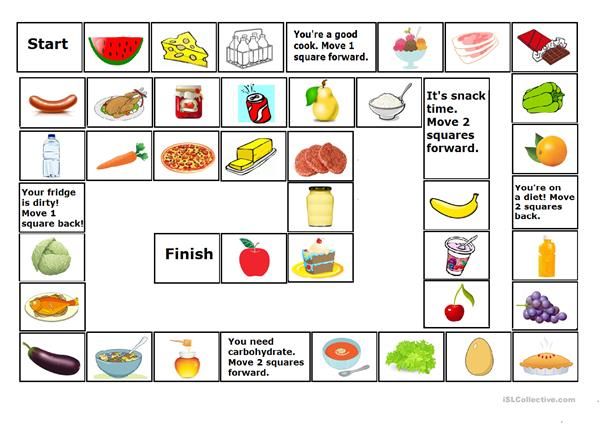 This will encourage people to get to know one another and be great if you are planning for some heavy participation in upcoming games (ahem, such as "Name that Baby Food"). The more comfortable your guests are with one another, then the more likely they will be want to play more game!
This will encourage people to get to know one another and be great if you are planning for some heavy participation in upcoming games (ahem, such as "Name that Baby Food"). The more comfortable your guests are with one another, then the more likely they will be want to play more game!
Keepsake Baby Shower Activities
Hosting a baby shower can be a lot of fun, especially when you're including some hilarious baby shower games to play. Aside from all the fun, you should also consider some activities that can be enjoyed by the parents-to-be long after the baby shower is over. Keepsake activities are a lovely way to encourage guests to leave something special for the new parents that they can treasure for a while.
How to Host a Diaper Raffle
Looking for a way to set the new parents up for a good while? Consider including a diaper raffle with your event. It will require you to announce the diaper raffle with the invites going out so your guests will know they can bring a pack of diapers to participate, but it'll be worth the effort!
Guess the Baby Food - Baby Shower Game
Guess the Baby Food Game
Supplies: Variety of baby food 8 – 12 jars, paper to cover jars , spoons, numbers, pen and paper
How good are your taste buds? Well with Guess the Baby Food, you’ll challenge guests to see if they have the best palette in your group and can properly identify a variety of baby foods like squash, apple, pears, peas and more. A fun game for the ladies but even more of a treat during couples showers when the men get to play.
A fun game for the ladies but even more of a treat during couples showers when the men get to play.
Guess the Baby Food Game Prep & Play
a. Get 8-12 different baby foods. (Peas, sweet potato, pears…).
b. Now grab a sheet of paper and pencil to create the master Guess the Baby Food answer sheet and number it from 1 to however many types of baby food you have for the game. Randomly take the first jar of baby food, write down the name of the fruit or vegetable beside one of the numbers. Then cover with paper or remove the label of the baby food so the name and contents are can not be seen. Once that is completed, then write the number you assigned to that spice to the outside of the container or use a sticker on the outside of the jar. We found writing the numbers on stickers and then placing the stickers on the container was easiest. It is also helpful to have the number on the table in front of the baby food during game play.
c. Once all of the jars of baby food have be assigned a number, create your game sheet. Your Guess the Baby Food game sheet should include a place for guests to put their name and then a numbers for the baby food and a blank space beside the number. Print out one sheet per player.
Your Guess the Baby Food game sheet should include a place for guests to put their name and then a numbers for the baby food and a blank space beside the number. Print out one sheet per player.
d. Game set up; place the baby food on a table / counter top area, jars should be 1-2 feet apart if possible. You want space between them so players are not on top of each other tasting and guessing baby food. One way to make the game work better is to have 3 or 4 players go at a time and have them start at different baby food. This way they can move about, taste and easily write their answer without someone over their shoulder.
Others options:
– If you are concerned about people knowing what it is based on the color is to blindfold each guest and feed them. However, this takes a lot of time and extends the game.
– You could pass the baby food jar around the group. If you do this just ask that the don’t comment after tasting it.
e. Game Play: Hand out Guess the Baby Food game sheets, pens, and let them know that they are going to go around and taste the baby food in the jars and then write down what baby food they believe it is.
f. Once everyone has tasted and guessed the baby food, it is time to reveal what was in each jar and score the answers. Guests trade sheets and the hosts starts by ask who knows want number 1 was. Have guests offer opinions, then reveal what the food was and proceed to share all the answers. Score the results and give a prize to the guest who got the most correct.
Guess the Baby Food – Co-Ed Baby Shower Game Variation
In this version, instead of the guests trying to guess the baby food the new mom and dad are doing the guessing. This is a lot of fun as you can discover who knows their fruits, veggies, and flavors.
a. You’ll want 2 white boards or at least pen and paper for the players. First sit the parents to be at a table that faces the group and let them know their is going to be a competition. A food tasting competition. They will think that sounds like fun, then share it will be a baby food tasting competition!
b. Let them know that they will each be tasting a type of baby food and then after each has tasted it they will write down what they think it was that they tried, and when asked they will reveal their answer.
Let them know that they will each be tasting a type of baby food and then after each has tasted it they will write down what they think it was that they tried, and when asked they will reveal their answer.
c. If you think the color of the baby food gives away the baby food, you can always have them wear blindfolds, dark sunglasses or close their eyes while tasting the food. That is your option.
d. Game play for this is simple. Grab a jar of baby food, feed each parent to be, have then write down their answers (no peeking) and then ask them one by one to reveal the answer. Then slip off the cover to show the baby food. A correct answer gets 1 point, incorrect 0 points.
e. You can play whoever gets the most correct wins (easy way) or play to first person to get 5 or 7 correct.
If is a lot of fun to see their facial expressions as they taste the different baby food, especially the ones that don’t taste that great.
Food games to train picky eaters
Viktoriya Levchuk© Modern parents do not like to play with their children. To be honest, they either do not know how, or are too busy in everyday worries. And nutrition games play an important role in teaching the picky eater. Indeed, in an entertaining form it is easier to perceive information and learn something new. In case of pickiness, try hateful food.
To be honest, they either do not know how, or are too busy in everyday worries. And nutrition games play an important role in teaching the picky eater. Indeed, in an entertaining form it is easier to perceive information and learn something new. In case of pickiness, try hateful food.
What are food games?
Contents:
Food games, food games, cooking games, food games, kitchen games cooking, so as not to remain hungry in the absence of an adult.
"Don't play with your food!" In childhood, this phrase is often repeated to children as a mantra by parents trying to teach good table manners. nine0005
But mom and dad forget that breaking the rules of adult etiquette will help achieve their cherished goal: to make children willingly eat those foods that really do not attract kids, vegetables and fruits in the first place, especially if they are green.
Food is a game.
However, touching food, smelling it, handling it, in short, all the games associated with eating, and its entire context of cooking, shopping and accessories, has an important educational value for children.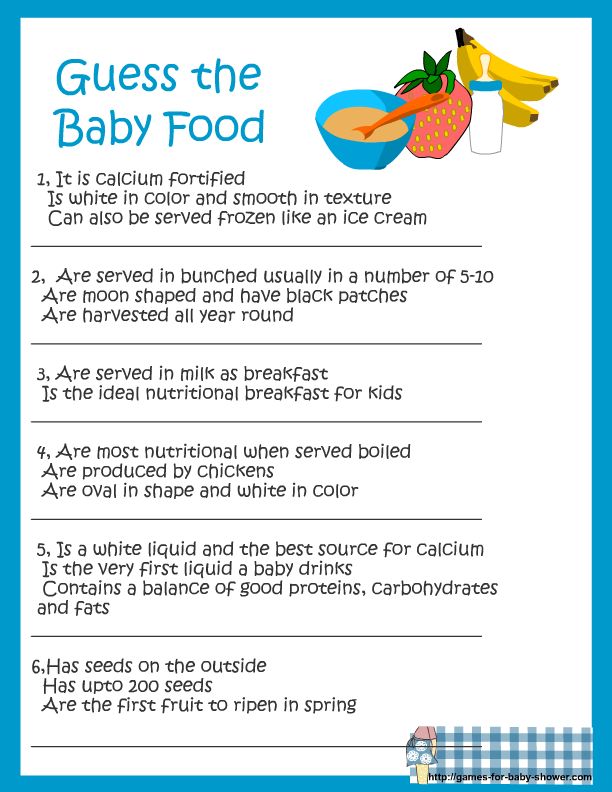 nine0005
nine0005
A child learns this world through play. What seems like adult pampering is for children to explore the space around. Therefore, do not scold for games with food at the table.
Moreover, the above does not negate the fact of learning the rules of good behavior at the table. It's just that the child must go through all the phases of development, and you should not miss the period when the food flies to the floor, in the face, and also crumples, licks, warms up, etc. This is a messy stage, but an important one in a child's development.
Importance of play in child development
Play is an important aspect of a child's life. Play is a spontaneous activity of the child, from which he gets pleasure, satisfaction and entertainment. Whereas in the past play was considered an aimless pastime, a sort of distraction from more important pursuits such as study or work, beginning in the nineteenth century and particularly during the twentieth century, various scholars instead began to emphasize the importance of play in the development of the child.
Play is closely related to the child's learning and healthy growth. The importance of the game is such that even the UN Convention on the Rights of the Child and Adolescent in Article 31 recognizes the child's right not only to rest and leisure, but also to games and recreational activities. nine0005
Play functions
Play activities are now unanimously considered fundamental to the emotional, cognitive, motor and relational development of the child. With the help of the game the child:
— learns and strengthens his communication skills;
- realizes the existence of rules - many games, especially group games, require the observance of certain rules - learns to use them, understand their meaning and the need to resort to them;
- establishes a particularly fruitful exchange with external reality and with other individuals; a spontaneous and joyful transfer of knowledge, skills, techniques and skills is created; nine0005
- develops the ability to manage your emotions;
— learn how to program and make projects; cognize external reality and relate to it, endow the surrounding world with meaning and understanding;
- learn to communicate with others and establish active, constructive, meaningful relationships;
- develop your own creative abilities.
The role of play in the development of the child. Opinions of educators
Many scientists, including anthropologists, educators, philosophers and psychologists, have worked to understand how play activities relate to child development. Several theories have been formulated regarding this. nine0005
Play: the most authentic creative manifestation
Friedrich Fröbel considered play to be the determining factor in the development of the child. In his pedagogical activity, he considered the game not as a form of leisure or entertainment, but as a means by which the child learned to interact with other personalities and with external reality.
Play is also considered the most authentic creative expression and source of learning: through play, the child learns about shapes and their properties, as well as about numbers, in a spontaneous and natural way. In the schools he founded, kindergartens, he provided his students with some games, geometric solids used as teaching aids. For example, Wooden Froebel Cubes. nine0005
For example, Wooden Froebel Cubes. nine0005
Spencer and excess energy
The evolutionist Herbert Spencer stated that the game covers the function of consuming those energies that an evolved being, such as man, no longer burns up in the struggle for survival. Thus, play is a functional response to an excess of energy that must be released instinctively.
Karl Gross and the game as a preliminary exercise
Karl Gross interpreted the game as a kind of "pre-training", that is, preparation for adulthood. With play, a need considered innate, the child acquires increasingly complex skills and thought patterns necessary to lead an independent life. The game also allows you to develop your personality, especially in its instinctive dimensions. nine0005
Freud and the doctrine of the connection between play and the psyche
Sigmund Freud specifically investigated the connection between play and the child's psyche. The game allows you to throw out emotions and at the same time control them. Freud also noted that children tend to invent games that involve identification with what they love or fear. In both cases, the child can explore the emotional reality, get to know it better, and learn to dominate it.
Freud also noted that children tend to invent games that involve identification with what they love or fear. In both cases, the child can explore the emotional reality, get to know it better, and learn to dominate it.
Huizinga and play as the basis of culture
Historian and linguist Johan Huizinga considered the game as the basis of culture and human life organized in society. In his text Homo ludens, published in 1938, he emphasizes that play is one of the most authentic testimonies of creativity.
Piaget and the stage theory
Educator Jean Piaget assigns an important role mainly to the cognitive development of the child. The theory of development, which this teacher adheres to, is stadial: the child grows up, overcoming a series of stages. In the same way, play changes its form as the child grows. nine0005
At the first stage, the child plays exercise games (for example, pouring water, clapping hands), then symbolic games follow (based on the child's ability to imagine, "pretending"), finally, games of rules (necessary for socialization, these are games ), which require compliance with a number of conventions and norms. The game, according to Piaget, allows the child to consolidate already acquired skills and at the same time to realize their possibilities of influencing external reality.
The game, according to Piaget, allows the child to consolidate already acquired skills and at the same time to realize their possibilities of influencing external reality.
Vygotsky and the theory of the zone of proximal development
Lev Vygotsky is one of the teachers who most insist on the development of the child not only from the cognitive, but also from the emotional and social points of view. Play is also of paramount importance because it underlies the zone of proximal development, Vygotsky's fundamental theory of thought, by which we mean development that can occur through the intervention of others and that closes the gap between one's own development and the possibilities of its development.
In addition, by playing, the child can learn from those who have more skills, and thus expand their own knowledge and skills. Through play, the child can respond to his needs and give new meaning to his surroundings. nine0005
Four categories of play Caillois
Roger Caillois in his text "Games and Men" defines four main categories of games, which correspond to many tendencies of the human psyche.
- Competitive games (eg tournaments or sporting events).
- Games built on chance, on an "attempt of fate" (dice game, heads or tails, lotteries).
- Games based on pretense and mimicry (dress-up games, games with dolls, or in general all games in which children imitate adults). nine0102
4. Games in which there is a challenge to danger, even fear that it can be mastered (carousels or swings).
Paidiya and ludus
All games move between two opposites: on the one hand, paydia (improvisation, lack of rules and restrictions, fun) and ludus (rules and effort).
Winnicott and games that allow the child to become aware of himself
Donald Winnicott, a pediatrician and psychoanalyst, studied the development of the child and the various phases that distinguish him, starting with the degree of dependence of the child on the parent. He emphasized how the game allows the child to become aware of himself and through creativity to learn to know himself. nine0005
nine0005
Play helps the child grow and communicate with others. Winnicott, defining his game theory, called transitional objects all those objects from which the child draws security (for example, a blanket, a soft toy) and at the same time allows him to develop a detachment from the main educator, usually from the mother, gradually and not traumatically. .
Montessori and the freedom of the child
It is important to Maria Montessori that the child moves, plays and learns in a suitable, calm environment appropriate to his age and his needs. In the kindergarten she founded, Casa dei bambini, everything was really suitable for children. According to Montessori, the priority was to allow the child to gradually become independent and enjoy their freedom. The child had at his disposal and could freely choose among the materials that Montessori considered most suitable for creating incentives for constructive and educational activities. nine0005
Why is it difficult for adults to play with children?
It has been noticed that modern parents almost never play with their children. Perhaps this is due to their childhood, when a little mom or dad was forbidden to have too much fun, play noisily and be noticeable. Since most adults who are about 30-40-50 years old had a difficult childhood in which our parents simply survived. Children played the role of small adults who played either quiet games or loud ones, but away from adults. nine0005
Perhaps this is due to their childhood, when a little mom or dad was forbidden to have too much fun, play noisily and be noticeable. Since most adults who are about 30-40-50 years old had a difficult childhood in which our parents simply survived. Children played the role of small adults who played either quiet games or loud ones, but away from adults. nine0005
We don't have an example of playing with adults, so it's hard to play with your kids right now. Someone in this situation advises to talk to your inner child and allow him to be small, to allow him to be playful and funny.
It is also possible that children's games are not interesting for adults, when it is difficult to fantasize or drive a car for a couple of hours. Therefore, the rule of 10-15 minutes helps, sometimes this time is enough for the child to understand that the parent is nearby, he plays with him. The rest of the time you can leave the baby for independent games. nine0005
Also once heard advice, if it is not interesting to play with a child, then it is worth analyzing what is interesting to me personally, for example, reading, educational games, board games, etc. But my husband loves pampering and willingly plays active games with them on walks, and my grandmother can drive the car for hours on an impromptu track. Here is the division of games with the child. Everyone is happy, the kid understands that mom can drive cars, but not for a shorter period of time, but with grandma you can do this for a long time and with imagination. nine0005
But my husband loves pampering and willingly plays active games with them on walks, and my grandmother can drive the car for hours on an impromptu track. Here is the division of games with the child. Everyone is happy, the kid understands that mom can drive cars, but not for a shorter period of time, but with grandma you can do this for a long time and with imagination. nine0005
You can also carefully plan your food game , but let the situation take its course in the beginning, so as not to be disappointed if everything goes wrong. Children are unpredictable, their hysteria is possible from scratch, the child may not be ready to play right now. I have some games waiting for years. Photos of playing with food, expecting a second child and his 5th birthday. So if you can’t play one game, then you should look for another.
Another piece of advice, don't spend big money on these games. There is the Internet, and free templates, as well as Avito, we also remember about discounts and improvised means.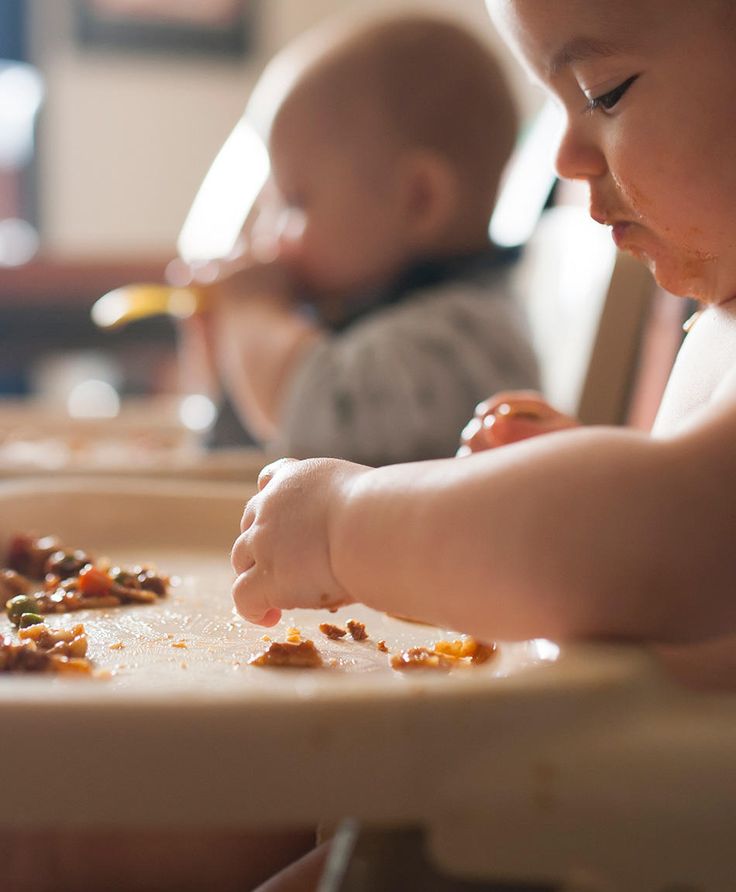 Sometimes you can show your imagination and collect food games in the kitchen from adult supplies. nine0005
Sometimes you can show your imagination and collect food games in the kitchen from adult supplies. nine0005
How to understand if a child is playing or indulging?
The line between play and pampering is very thin, not every parent can trace it. It is important to stop overindulgence, but encourage play. So how to understand this line?
Quite simply, if a parent watches the baby perform an activity in a relaxed, orderly manner, with a serious and focused look, it is most likely that he is working/playing. Let me remind you that in the Montessori upbringing methodology, children do not play, but work. nine0012 If, on the other hand, he behaves erratically, mishandles objects, and is easily distracted, he may not be at work and needs help finding creative activities to put his energy into. In this case, suggesting another activity might be a great idea.
Picky Eater Training Games
Picky Eater Training Food Games are a must-have, as an additional tool to expand your diet. nine0012 A fussy person often refuses a product because she does not know how it smells, how it should be cleaned, what can be cooked from it. Like simple banal things that our generation absorbed through ordinary observation. However, modern children need to be taught to love a new product, to acquaint them with it in advance.
nine0012 A fussy person often refuses a product because she does not know how it smells, how it should be cleaned, what can be cooked from it. Like simple banal things that our generation absorbed through ordinary observation. However, modern children need to be taught to love a new product, to acquaint them with it in advance.
For example , growing microgreens helps the fussy eater get used to the product in advance, understand that it is safe and can be eaten as a regular green grass, as well as in salads. And here the child has a choice, he can decide where to use the product that he himself has grown on the windowsill. It's very comfortable with picky. In this case, food games begin before the product is tasted. nine0005
At about 2 years of age, picky eating begins. Children explore the world through touch, smell, sound, taste and sight. One way to help kids get to know and love foods better is to try playing food games. The feeling of eating in a pressure-free zone allows children to engage without fear of being forced to eat said food.
After all, food games do not involve tasting. At the initial stage of the game, the child learns products through pictures or touch, when it is not necessary to taste or eat something. A good opportunity to accept the product, stop being afraid of it, then there is the stage of trying. nutrition games make it easier to accept a product than persuasion or begging. nine0005
How to encourage a child to play with food?
To expand the diet, parents should help organize food games. Up to 2 years task just don't interfere, let the baby do safe things with food, which are not always clean, but more effective in teaching fine motor skills and sensory skills.
After the age of 2 to 7 it is already necessary to help organize nutrition education activities. And it's not as difficult as it seems. Parents can get creative and encourage kids to discover the taste, smell, sound and texture of food through food games. All these steps help them move towards the main goal, which, ultimately, is to eat the product.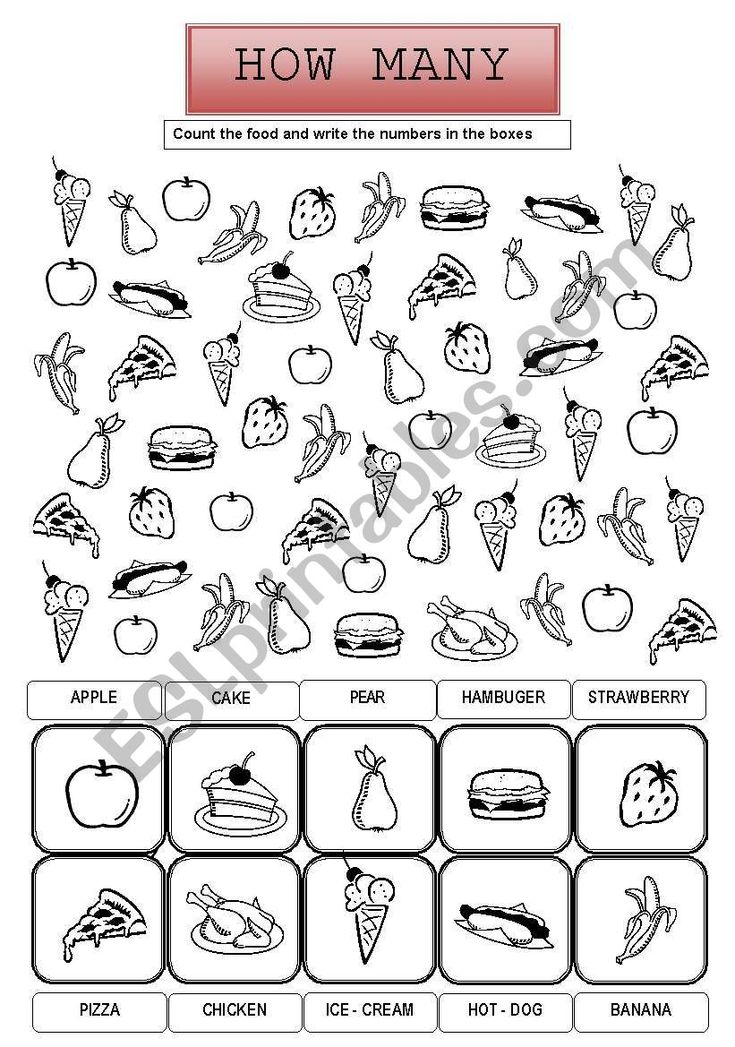 nine0005
nine0005
Offering food games to them, one should not expect an adequate adult reaction, sometimes the activity turns into a dirty event anyway. Tune in to “What happens next, I wonder? What will he do?”… these questions help parents feel more comfortable and overcome any hesitation they may have, as well as let go of the situation. Everything can be washed and repaired, it's not so important, because an omnivore is the best long-term investment in a child's health. nine0005
Parents should not be afraid to make silly voices or role-play with their child during the nutrition game! Sometimes stupidity can change the world and show that playing with food is okay!
This is especially helpful if you are moving from not being allowed to play with your food to encouraging it. The main thing is to change the rule once and do not touch anything else. It is not necessary either to punish for games with food, or to encourage them. These throwings greatly disorientate the child. If games with food are allowed, then forever, you can only adjust the place, size of the disaster, etc. nine0005
If games with food are allowed, then forever, you can only adjust the place, size of the disaster, etc. nine0005
10 learning games for the picky eater
Next, I will post different nutrition games for the picky eater. Try something your child will definitely like and help expand the child's diet.
Gradually I will add nutrition games here.
Game Five tastes - CLICK on ME!!! Game Five tastes - CLICK on ME!!! Game "Find the extra" - CLICK on ME!!!Game Product Introduction - CLICK ME!!!Game Once upon a time there were gummies - CLICK on ME!!!Verse Once upon a time there were gummies - CLICK ME!!!Verse Once upon a time there were gummies - CLICK ON ME!!!Game What taste? — CLICK ON ME!!!Game Hunt for Fatty Food — CLICK ON ME!!!Game Food Traffic Light — CLICK ON ME!!! nine0004 I will duplicate games with food in contact and classmates !!!
16 games and experiments with food
The main way children learn about the world is through play. And food games are no exception. We grew up in the belief that food is a special value, it is not a toy. But it is important for our children to play. It is by playing that the child learns, develops interest, begins to trust food more. How to separate play with food and play while eating, says the author of the book "Baby Food: One Meal for the Whole Family" nutritionist Alexandra Sitnova.
And food games are no exception. We grew up in the belief that food is a special value, it is not a toy. But it is important for our children to play. It is by playing that the child learns, develops interest, begins to trust food more. How to separate play with food and play while eating, says the author of the book "Baby Food: One Meal for the Whole Family" nutritionist Alexandra Sitnova.
The importance of play
Important and useful games for the child's food interests and eating habits:
- playing with toy foods, feeding dolls and bears outside the child's meals;
- pouring cereals, sorting vegetables and fruits by color, size;
- product experiments;
- pouring water, soup, juice, milk from one container to another, even while eating: if a child pours water from a glass into a plate, this is normal; nine0102
- clenching food in a fist, spreading fingers on a plate, drawing with a finger on porridge - this is also normal;
- endowing food with the properties of toys (bitten a cutlet to make a dinosaur, laid out a Christmas tree from a cucumber, blinded a typewriter from mashed potatoes).

If a child came up with such a game himself, that's fine. All this helps the child to learn the tastes and textures, the properties of food, endow it with some qualities, and therefore make it his friend. Such games can be very dirty, but the sooner the child goes through all the stages of food games, the wider his diet will be. Children who were not allowed to play with food at an early age may show more pronounced rejection of new foods and try to play with food at an older age when they find themselves in a children's group. nine0005
What not to do?
Interferes with a good relationship with food:
- feeding toys during the child's meals, because most often, while the child is feeding the bear, the mother is quietly feeding the child;
- toys that distract the child from eating: from rattles for the little ones to a teapot with lights, which are turned on for the child to eat;
- meals in the room where the child usually plays; nine0101 tableware with game elements: plates with a secret bottom where a toy is hidden, forks and spoons in the form of excavators and airplanes;
- parents making toys out of food: carving bears out of apples, drawing muzzles on porridge, celery palm trees, and cars out of carrots and peas.

In these cases, the child does not learn food through play, but is distracted from eating by play. He does not study textures, tastes, aromas.
Sample Games
Try the following food games that your little ones and those who are just starting school will love. nine0005
Vegetable and Fruit Guessing Bag
Place a few vegetables, real or toy, in a cloth bag or pillowcase. Ask your child to feel the bag and guess what vegetables are in it. In the next step, you can invite the child to put his hand in the bag and try to guess again. A variant of this game would be the Blindfold Guess the Vegetable game. Blindfold the child and put a vegetable in his hands. Let the child guess what kind of vegetable it is by touching, smelling, and maybe tasting it. Don't miss your round and try to guess what your child put in the bag. nine0005
Letter of the week
Every week, try a product with a certain letter, or include the maximum number of products with that letter in the menu.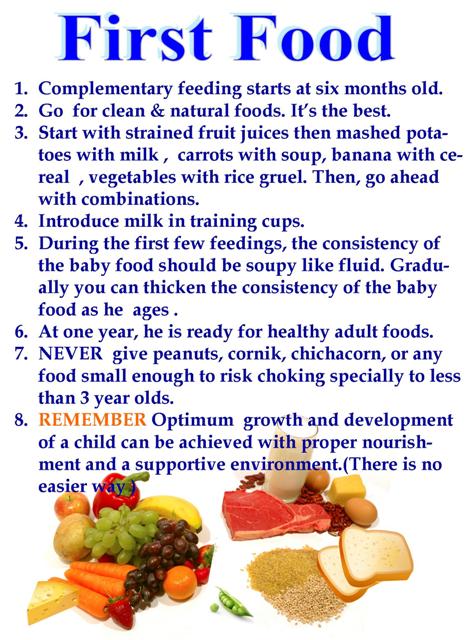 For example, from products with the letter M, do not forget about milk, raspberries, tangerines, carrots, meat and pasta.
For example, from products with the letter M, do not forget about milk, raspberries, tangerines, carrots, meat and pasta.
Guess the odd one
Name or write four words, including three vegetables or fruits, and one extra word. For example: "carrot, potato, cat, onion." Ask your child to find the odd word. Make the game harder by using a word that is also food. For example: "celery, peppers, carrots, yogurt." Ask the child why the extra word doesn't fit the rest of the group. nine0005
Host a theme day
Offer to try different variations of the same product by hosting theme days. For example, on Apple Day, offer green apples, red apples, dried apples, celery apple soup, apple duck, applesauce, apple juice, and even apple ice cream.
Guess the food
“I am thinking of a food that starts with a letter…” Give additional clues such as color, shape, texture, etc. until the child guesses what the food is. Now let the child guess the product, and you will guess. nine0005
nine0005
Raisin Meditation
A video of the Raisin Meditation can be easily found on YouTube, but we provide a simplified version for children. Choose a time when your child is not too hungry and suggest trying familiar foods again. After a few such workouts, you can move on to new foods that the child has not eaten before. Complete all steps with your child.
Hold the zest or the product of your choice. Consider it. What is she? Describe the color, size, shape, any irregularities. Is she cold or warm? Soft or hard? Smooth or rough? Smell the "flavor". What is her scent? What does she look like? Is it a sweet flavor, salty, sour? Move the "highlight" away from the nose. Do you smell the scent now? Put in your mouth. Don't chew, don't swallow. Just hold it in your mouth for a few seconds. What does the "raisins" taste like? What other product does it taste like? nine0005
Now chew. What sound do you hear when you chew? Is the product crunchy or not? Is it easy for you to chew? Is the product soft or hard? Or maybe it's sticky? Is he hot or cold? Chew carefully, feel the taste, describe it: sweet, very sweet, sweet and sour, salty, bitter… Swallow. What do you feel in your mouth? Is there a taste of "raisins" left? Want to eat another one?
What do you feel in your mouth? Is there a taste of "raisins" left? Want to eat another one?
Experiments and experiments
All children like experiments and experiments. Try the following food experiments with your child. He can be both a participant in the experiment and an observer. The child will be able to touch food, examine it, study its properties and become interested in it. nine0005
Salted potato experiment
Fill two small bowls with water and add a few teaspoons of salt to one of them. Label both bowls so you know which one contains the salt water. Cut the potatoes in half and place each half cut side down in a bowl. Leave for about 30 minutes and see what happens: the salt water will draw the water out of the potatoes, causing them to shrivel. Explain to the children that just as potatoes lose water when they are put in a salty solution, salty foods and drinks make people thirsty. nine0005
Red cabbage experiment
You will need red cabbage, baking soda, vinegar, water and three glasses. Finely chop the red cabbage, pour a glass of boiling water. Pour cold water into glasses. In the first, add a teaspoon of soda, in the second - a teaspoon of vinegar. Leave the third with clean water. Strain the red cabbage solution and divide into three portions. Pour a third of the solution into a glass of vinegar water, a third into a glass of soda water, and a third into a glass of clean water. The vinegar solution will turn red, the soda solution will turn blue, and in the third glass the solution will turn purple. Red cabbage juice acts as an indicator of acid-base balance, changing its color. Mix vinegar and soda solutions. You will notice the release of air bubbles, after which the solution will turn purple. nine0005
Finely chop the red cabbage, pour a glass of boiling water. Pour cold water into glasses. In the first, add a teaspoon of soda, in the second - a teaspoon of vinegar. Leave the third with clean water. Strain the red cabbage solution and divide into three portions. Pour a third of the solution into a glass of vinegar water, a third into a glass of soda water, and a third into a glass of clean water. The vinegar solution will turn red, the soda solution will turn blue, and in the third glass the solution will turn purple. Red cabbage juice acts as an indicator of acid-base balance, changing its color. Mix vinegar and soda solutions. You will notice the release of air bubbles, after which the solution will turn purple. nine0005
Paper clip and water experiment
You will need a glass of water, a drop of dish soap and a paper clip. Take a paperclip and carefully place it on the surface of the water. It will not sink due to the surface tension of water. If you drop a drop of dishwashing detergent, the surface tension will loosen and the paperclip will sink.
Sinks - does not sink
Fill a large bowl with water, take an apple without cuts or dents and put it in the water. The apple doesn't sink. It contains a lot of air, which allows it to float on the water. Put a pear in the same bowl and it will sink. The pear contains less air, and therefore cannot float on the surface of the water. Take a ripe pumpkin or melon, you will need a very large bowl of water or even a bucket. Put the pumpkin or melon into the water. Despite the fact that the fetus is very heavy, it does not sink, just as a person who takes air into his lungs does not drown. nine0005
Vegetable oil and water experiment
Vegetable oil is not miscible with water. Take half a glass of water, add a few tablespoons of oil and try to beat it with a fork - there will be droplets of oil on the surface. Now try to do the same with a blender, and you will see that the oil has mixed with water - the liquid has become homogeneous. But as soon as you stop whipping, after a few seconds, the oil will again gather at the surface of the water.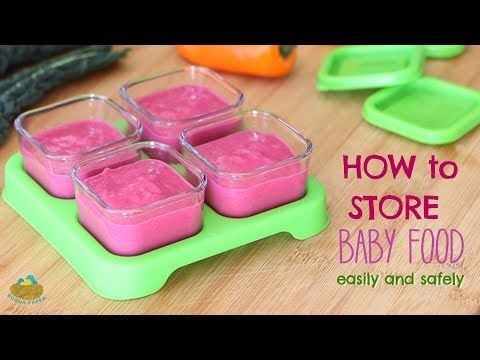 Water is denser and sinks to the bottom, while oil is less dense and therefore rises. By adding some food coloring, you can make a homemade lava lamp. nine0005
Water is denser and sinks to the bottom, while oil is less dense and therefore rises. By adding some food coloring, you can make a homemade lava lamp. nine0005
Colored foam
Prepare colored foam. To do this, cut the lemon in half, make several cuts on the slices. Add dots of different colors of food coloring to different parts of the lemon. Sprinkle lemon with baking soda. After a few seconds, foam will begin to stand out, the reason for this is the mixing of soda and acid. The same reaction occurs when we want to bake fluffy pancakes and add soda and vinegar or soda and lemon juice to the dough. Even with kefir, soda interacts, releasing foam.
Experiment with an orange
Like an apple, an orange does not sink in water. Take a large bowl of water and put a whole orange in it. It will float on the surface. Now take out the orange, wipe it with a napkin and peel it. Put it in the water again - it will sink. The porous peel of an orange helps it stay on the surface of the water due to air molecules. As soon as we remove the peel, the orange loses its aerial protection.
As soon as we remove the peel, the orange loses its aerial protection.
Why does an apple darken?
Cut an apple into six pieces. Place an apple slice into six cups. Add water to the first glass, milk to the second, apple cider vinegar or wine vinegar to the third, baking soda to the fourth, lemon juice to the fifth, and nothing to the sixth. Sign each cup and leave for 2-2.5 hours. Only an apple in lemon juice will not darken. It darkens when exposed to air. Lemon juice contains a lot of vitamin C, which is the first to react with air and break down, while the apple remains protected. nine0005
Wash your hands before eating
Take four ziplock bags, four large paper napkins and four slices of fresh bread. Wet wipes and place one in each bag. Hold one piece of bread with dirty hands, then put it in a bag and fasten it. Treat your hands with sanitizer and hold the second piece for a minute or a little longer, put it in the second bag and also fasten it.

